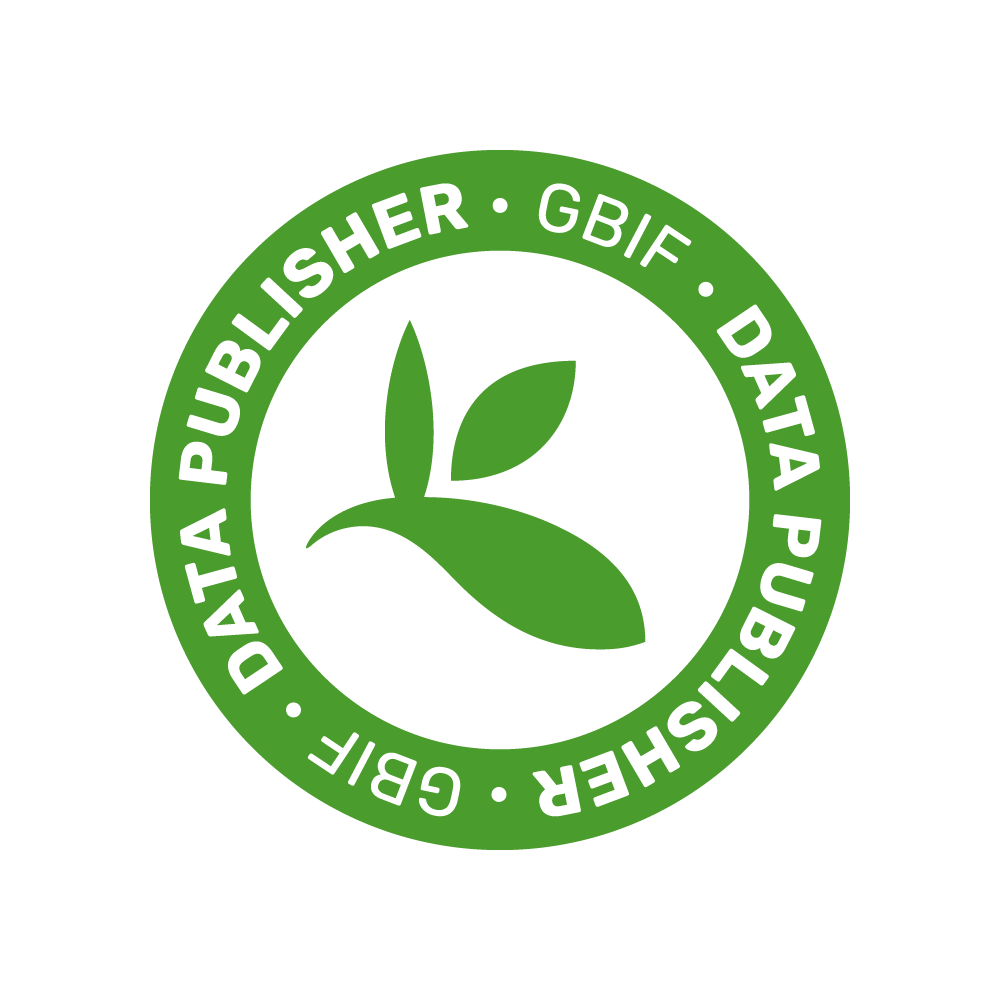Fulvio Pupilli
Role: Research Director
Section: Researchers and Technologists
Division: Perugia
Tel: (39) 075-5014803
E-mail: fulvio.pupilli[at]cnr.it
URL: http://ibbr.cnr.it

| curriculum vitae |
| Personal information | |
| Name, Surname | Fulvio Pupilli |
| Address | Via Madonna alta n. 130, I-06128 Perugia, ITALY |
| Telefono/Telephone | +39(0)75 5014803 |
| Fax | |
| fulvio.pupilli@ibbr.cnr.it | |
| Website | |
| Nationality | Italian |
| Place and Date of birth | May 6th 1961 |
| Work experience | |
| n. matricola 42275 qualifica I ricercatore livello II | |
| Dates (from - to) | 2001→ |
| Name and address of employer | CNR, P.le Aldo Moro 9, 00185 ROMA |
| Type of business or sector | Research |
| Occupation or position held | I° Researcher at the Institute for Biosciences and Bioresources CNR Perugia |
| Main activities and responsibilities | Laboratory research, coordination of research, writing projects, scientific papers and reports |
| Dates (from - to) | 1996-2001 |
| Name and address of employer | CNR, P.le Aldo Moro 9, 00185 ROMA |
| Type of business or sector | Research |
| Occupation or position held | Full-time researcher at the Institute for Forage Plant Breeding CNR Perugia |
| Main activities and responsibilities | Laboratory research, writing research projects, writing scientific papers and reports |
| Dates (from - to) | 1991-1995 |
| Name and address of employer | CNR, P.le Aldo Moro 9, 00185 ROMA |
| Type of business or sector | Research |
| Occupation or position held | Research assistant at the Institute for Forage Plant Breeding CNR of Perugia |
| Main activities and responsibilities | Laboratory research, writing research projects, writing scientific paper and reports |
| Dates (from - to) | 1990-1991 |
| Name and address of employer | EU, Rue de la Loi 130, 1049 Brussel, (Be) |
| Type of business or sector | Research |
| Occupation or position held | Research fellow at MPI Koeln (D) |
| Main activities and responsibilities | Laboratory research |
| Education and training | |
| Dates (from - to) | 1981-1985 |
| Name and type of organisation providing education and training | University of Perugia |
| Principal subjects occupational skills covered | Theoretical and practical studies on biology |
| Title of qualification awarded | Laurea in biology |
| Level in National classification | 107/110 |
| Dates (from - to) | 1975-1980 |
| Name and type of organisation providing education and training | Scientific lyceum L.Salvatorelli, Marsciano (PG) |
| Principal subjects occupational skills covered | Theoretical studies on scientific and human matters |
| Title of qualification awarded | High school diploma |
| Level in National classification | 48/60 |
| Research activities | |
| Actual Research sectors | Analysis of plant reproductive system through molecular approaches. Actually Dr.Pupilli is studying apomixis, that is a clonal plant reproduction by seeds. The overall objective of the research is the isolation of the genetic determinants of apomixis in a wild apomictic species Paspalum simplex with the perspective to develop an apomixis system for crops. Main achievements are: i) characterization and mapping of the apomixis locus, ii) establishing synteny relationships with rice genome, iii) isolation of candidate genes through partial sequencing of apomixis-linked BAC and comparative transcriptomic analysis. |
| Recent Scientific Activities. | A) Induction of new variability by somatic hybridization B) Molecular markers of the analysis of natural and inducted genetic A) During the first phase of his career Dr. Pupilli obtained and characterized several somatic hybrid plants combining the genome of alfalfa with those of M.coerulea (S+C), M.arborea (S+A) and M.falcata (S+F). B) After a stage at the MPI of Cologne, Dr. Pupilli used molecular markers to study the genome composition of somatic hybrids and the genetic variability in forage and turf plant populations. |
| Additional information | Projects (Coordinator) National (Title of the project; fund source) A) New bio-molecular tools to study plant reproduction; CNR-RSTL. International (Title of the project; fund source) A) Molecular characterisation of apomictic reproduction in forage grasses belonging to the genus Paspalum; MAE, Italy-Argentina bilateral agreement. B) Characterisation of the genetic determinants of apomixis in Paspalum simplex; MAE, Italy-Argentina bilateral agreement significant projects Projects (Scientific responsible of research units): National (Title of the project; title of research; fund source) A) Characterization and exploitation of plant, animal and microbiological genetic resources; apomixis and biodiversity; CNR (strategic project). B) Turfgrass for agriculture, sport and amenity; turfgrass variety identification through molecular markers; Ministry of agriculture. C) Molecular control of seed development in rice; Genetic, molecular and functional analyses of OsORCx in rice seed development. MUR-PRIN International (Title of the project; title of research; fund source) A) Introducing and controlling asexual reproduction through seeds in apomictic systems and sexual crops; Apomixis in Paspalum simplex; EU (Contract No FAIR5-CT97-3730). B) Natural apomixis as a novel tool in plant breeding; Comparative mapping of apomixis in Paspalum simplex. EU (Contract No QLG2-CT-2000-00603) Invited seminars (Title; location): A) Somatic hybridization in forage legumes; Max Planck Institüt für Züchtungsforschung, Koeln (D). B) Paspalum simplex: A model species to study apomixis; Hamburg (D). C) Genetic control of apomixis in Paspalum simplex; Gargnano (I). D) Comparative mapping of apomixis in Paspalum simplex; Bath (UK). E) Molecular markers for turfgrass variety identification; Viterbo (I). Visiting scientists hosted A) Dr. Eric Martinez; Agricultural University Corrientes (Argentina) B) Dr. Diego Hojsgaard; Agricultural University Corrientes (Argentina) C) Prof. Camilo Quarin; University Corrientes (Argentina) D) Prof. Juan Pablo Ortiz University of Rosario (Argentina) E) Dr. Pankaj Kaushal; Central Rice Research Institute Cuttack (India) Editorial activities Dr. Pupilli acts as a reviewer for the following international scientific journals: Plant Cell Tissue & Organ Culture, Sexual Plant Reproduction, Molecular Breeding, Plant Molecular Biology, Theoretical and Applied Genetics, Euphytica, Plant Systematics and Evolution, Biological Journal of the Linnean Society, Crop Science, Planta. Collaboration with Argentinean CONICET Projects (Title of the project; fund source) A) Molecular characterisation of apomictic reproduction in forage grasses belonging to the genus Paspalum; MAE, Italy-Argentina bilateral agreement. B) Characterisation of the genetic determinants of apomixis in Paspalum simplex; MAE, Italy-Argentina bilateral agreement significant projects Seminars A) F.Pupilli: Comparative mapping of apomixis in P.simplex and P.notatum; (Corrientes, Argentina; seminar given in the frame of bilateral agreement Italy-Argentina financed by MAE) B) F.Pupilli: Isolation of the genetic determinants of apomixis in Paspalum simplex: achievements and perspectives (Rosario, Argentina; invited seminar for the III cycle of Ph.D school in agriculture, University of Rosario) Results (Argentinean authors in bold) a) Articles published in JCR international journals 1) F.Pupilli, M.E.Caceres, C.L.Quarin and S.Arcioni. Segregation analysis of RFLP markers reveals a tetrasomic inheritance in apomictic Paspalum simplex. Genome (1997) 40: 822-828. 2) F.Pupilli, P.Labombarda, M.E.Caceres, C.L.Quarin and S.Arcioni. The chromosome segment related to apomixis in Paspalum simplex is homoeologus to the telomeric region of rice chromosome 12. Molecular Breeding (2001) 8: 53-61. 3) M.E.Caceres, F.Pupilli, C.L.Quarin and S.Arcioni. Feulgen-DNA densitometry permits discrimination between sexual and apomictic plants in Paspalum simplex. Euphytica (1999) 110: 161-167. 4) F. Pupilli, E.J. Martinez, A. Busti, O. Calderini, C.L.Quarin, S. Arcioni Comparative mapping of apomixis reveals partial conservation of the apomixis locus in Paspalum spp. (2004). Molecular Genetics and Genomics 270: 539-548. 5) D.H. Hojsgaard, E.J. Martínez , C.A. Acuña, C.L. Quarin and F.Pupilli. A molecular map of the apomixis-controlling locus in Paspalum procurrens and its comparative analysis with other species of Paspalum (2011). Theoretical and Applied Genetics 123: 959-971. 6) J.P.A. Ortiz, C.L. Quarin, S.C. Pessino, C. Acuña E.J. Martínez, F. Espinoza, D.H. Hojsgaard, M.E. Sartor , M.E. Caceres, F. Pupilli Harnessing apomictic reproduction in grasses: what we have learned from Paspalum (2013). Annals of Botany 112: 767-787. 7) M. Podio, M. E. Cáceres, S. S. Samoluk, J.G. Seijo, S.C. Pessino, J.P. A. Ortiz, F. Pupilli A methylation status analysis of the apomixis-specific region in Paspalum spp. suggests an epigenetic control of parthenogenesis (2014). Journal of Experimental Botany. In press. b) Articles published in non-JCR international journals 1) F.Pupilli, M.E. Caceres, S.Arcioni and C.L.Quarin. Apomixis in Paspalum simplex: achievements and perspectives. Apomixis Newsletters (1998) 10: 19-23. c) Book chapters 1) O. Calderini, Song B.Chang, Hans de Jong, Annalisa Bietta, Sergio Arcioni, Maria E. Caceres, Camilo L. Quarin , Diego H. Hojsgaard, Iain S. Donnison and Fulvio Pupilli. Molecular cytogenetics of the apomixis controlling locus in Paspalum simplex. (2007) In: Horandl, E, Grossniklaus U, van Dijk P, and Sharbel T (Eds) Apomixis: Evolution, Mechanisms and Perspectives. A.R.G. Gantner Verlag K.G. Pp 125-135. d) Articles published in proceedings of international congresses 1) F.Pupilli, A.Busti, C.L. Quarin, S.Arcioni. Evidence of synteny between the long arm of rice chromosome 12 and the apomixis controlling locus of Paspalum simplex. Proceedings of the 2nd International Apomixis Conference. Como 24-28 April 2001, p.33. 2) F.Pupilli, A.Busti, C.L. Quarin, S.Arcioni. Evidence of synteny between the long arm od rice chromosome 12 and the apomixis controlling locus of Paspalum simplex. Proceedings of the International Conference on Gametophyte- Evolution Development and Function Ascona (CH) 8-13 June 2003, p.53. 3) F.Pupilli O.Calderini C.L. Quarin, E.J. Martinez, M.E. Caceres, S, Arcioni. Isolation and characterization of apomixis-related BAC clones in Paspalum simplex. (2006) Proceedings of the XXVI International EUCARPIA Congress Fodder Crops and Amenity Grasses Section, 3rd-7th September 2006 Perugia Pp 320-323. 4) F.Pupilli, O.Calderini, A.Bietta, M.E.Caceres, F.Paolocci, L.Polegri, D.Hojsgaard, and S.Arcioni. Isolation and characterization of an apomixis-linked gene in Paspalum simplex. (2007) Proceedings of the 3rd International Apomixis Conference; June 27th-July 1st 2007. Wernigerode (D), P 71. 5) F.Pupilli, M.E.Caceres, L.Polegri, L.Molinari, C.L. Quarin and S.Arcioni. Effect of DNA de-methylation on apomictic reproduction in Paspalum simplex (2007) Proceedings of the 3rd International Apomixis Conference; June 27th-July 1st 2007. Wernigerode (D), P 83. 6) Hojsgaard D.H. L. Polegri, C.L. Quarin, E.J. Martinez and F. Pupilli. Comparative mapping of apomixis in Paspalum simplex and P. procurrens (2007) Proceedings of the 3rd International Apomixis Conference; June 27th-July 1st 2007. Wernigerode (D), P 66. 7) J.P.A.Ortiz, S.C. Pessino, C.L. Quarin, F.Pupilli, J. Stein, E.J. Martínez, F.Espinoza, S.A.Felitti, M.P. Rodriguez , N.Laspina, L.A. Siena, A.C. Ochogavía, M. Podio, M, Sartor, D. Hojsgaard and M. Urbani GENETIC AND MOLECULAR CHARACTERISATION OF APOSPORY IN PASPALUM SPP. (2008) Proceedings of the XX International Congress on Sexual Plant Reproduction August 4-8th Brasilia (Br) pp88-89. 8) F.Pupilli, L.Polegri, F.Paolocci, P.Kaushal, J.P.Ortiz O.Calderini IDENTIFICATION AND CHARACTRERISATION OF APOMIXIS-LINKED GENES IN PASPALUM SIMPLEX (2010) Proceedings of the XXI International Congress on Sexual Plant Reproduction. August 2nd-6th Bristol (UK) P 79. 9) F.Pupilli, L.Polegri, F.Paolocci, P.Kaushal, J.P. Ortiz M.E. Caceres, O. Calderini. Mining apomixis-linked genes in Paspalum simplex (2011). Proceedings of 2nd MC and WGs Meeting of HAPRECI COST project. Valencia (Spain) 4-5th July 2011 P. 24 10) O.Calderini E. Martinez, D. Hojsgaard, C. Quarin, F. Paolocci, M.E. Caceres, I. Donnison, H. Baumlein, F.Pupilli (2012). Comparative genomic analysis of the apomixis locus in Paspalum spp. ALAG Congress Argentina 2012. Rosario Argentina 28-31st October 2012 PP. 61-62. Publications N. 1.2.5.7.9.10 of the section “d” have been the subject of oral communications that have been given at international congresses upon invitation. This fact contributed to disseminate results of the collaborative efforts at international scale. |
| Books and Articles | General publication list: 1) M.Piccirilli, F.Pupilli and S.Arcioni. Lotus tenuis Wald.& Kit.: in vitro conditions for plant regeneration from protoplasts and callus of various explants Plant Science (1988) 55: 77-82. 2) F.Pupilli, F.Damiani, M.Pezzotti and S.Arcioni. Plant regeneration from callus protoplasts of Onobrichis viciifolia NOBRYCHIS VIICIIFOLIA Scop. (sainsoin) Plant Science (1989) 63: 87-94. 3) F.Pupilli, S.Arcioni, F.Damiani and M.Pezzotti. Plant regeneration from callus cultures of Lotus pedunculatus Cav. Plant Cell Tissue and Organ Culture (1990) 23:193-199. 4) M.Pezzotti, F.Pupilli, F.Damiani and S.Arcioni. Transformation of Medicago sativa using a TI plasmid derived vector Plant Breeding (1991) 106: 39-46. 5) F.Pupilli, S.Arcioni and F.Damiani. Protoplast fusion in the genus Medicago and isoenzyme analysis of parental and somatic hybril cell lines Plant Breeding (1991) 106:122-131. 6) F.Pupilli, F..Damiani, E.Nenz and S.Arcioni. In vitro propagation of Medicago and Lotus species by node culture. In Vitro Cell Developmental Biology (1992) 28:167-171. 7) F.Pupilli, G.M.Scarpa, F.Damiani and S.Arcioni. Production of interspecific hybrids in the genus Medicago through protoplast fusion Theoretical and Applied Genetics (1992) 84:792-797. 8) G.M.Scarpa, F.Pupilli, F.Damiani and S.Arcioni. Plant regeneration from callus and protoplasts of Medicago polymorpha Plant Cell Tissue and Organ Culture (1993) 35:49-57. 9) Y.Zafar, E.Nenz, F.Damiani, F.Pupilli and S.Arcioni. Plant regeneration from explant derived calli and from protoplasts of Medicago littoralis Plant Cell Tissue and Organ Culture (1995) 41:41-48. 10) F.Pupilli, S.Businelli, M.E. Caceres, F.Damiani and S.Arcioni. Molecular cytological and morpho-agronomical characterization of hexaploid somatic hybrids in Medicago Theoretical and Applied Genetics (1995) 90:347-355. 11) F.Pupilli, S.Businelli, F.Paolocci, C.Scotti, F.Damiani and S.Arcioni. Extent of RFLP variability in tetraploid populations of alfalfa Plant Breeding (1996) 115:106-112. 12) E. Nenz, F.Pupilli, F.Paolocci, F.Damiani and S.Arcioni. Plant regeneration and genetic transformation in Lotus angustissimus. Plant Cell Tissue and Organ Culture. (1996) 45:145-152. 13) A. Mariani, F. Pupilli O. Calderini. Cytological and molecular analyses of annual species of the genus Medicago Canadian Journal of Botany (1996) 74:299-307 Actual name of the Journal: Botany. 14) E.Nenz, F.Pupilli, F.Damiani and S.Arcioni. Somatic hybrid plants between the forage legumes Medicago sativa L. and Medicago arborea L. Theoretical and Applied Genetics (1996) 93:183-189. 15) P.D.Cluster, O.Calderini, F.Pupilli, F.Crea, F.Damiani and S.Arcioni. The fate of ribosomial genes in three interspecific somatic hybrids of Medicago sativa: three different outcomes including the rapid amplification of new spacer-length variants. Theoretical and Applied Genetics (1996) 93:801-808. 16) O.Calderini, F.Pupilli, P.D.Cluster, A.Mariani and S.Arcioni. Cytological studies of the nucleolar organizer regions in the Medicago sativa -coerulea-falcata complex Genome (1996) 39:914-920. 17) O.Calderini, F.Pupilli, F.Paolocci and S.Arcioni. A repetititve and species-specific sequence as a tool for detecting genome contribution in somatic hybrids of the genus Medicago. Theoretical and Applied Genetics (1997) 95:734-740. 18) M.Vitale, F.Pupilli, P.Labombarda and S.Arcioni. RAPD analysis reveals a low late of outcrossing in burr medic (Medicago polymorpha). Genetic Resources and Crop Evolution (1998) 45: 337-342 19) M.Bellucci, F.Pupilli and S.Arcioni. Variation for polyphenol oxidase activity in stems of Medicago species. Agronomie (1999) 19: 73-77. 20) F.Fupilli, P.Labombarda, C.Scotti and S. Arcioni. RFLP analysis allows for the identification of alfalfa ecotypes. Plant Breeding (2000) 119:271-276. 21) P.Labombarda. F.Pupilli and S.Arcioni. Optimal population size for RFLP-assisted cultivar identification in alfalfa (Medicago sativa L.). Agronomie (2000) 20:233-240. Actual name of the Journal: Agronomy for Sustainable Development 22) C.Scotti, F.Pupilli, S.Salvi and S.Arcioni. Variation in vigour and in RFLP-estimated heterozygosity by selfing autotetraploid alfalfa: new perspectives for breeding inbred alfalfa Theoretical and Applied Genetics (2000) 101:120-125. 23) M.E. Caceres, F.Pupilli, E.Piano and S.Arcioni. RFLP markers are an effective tool for the identification of creeping bentgrass (Agrostis stolonifera L.) cultivars. Genetic Resources and Crop Evolution. (2000) 47:455-459. 24) F.Pupilli, P.Labombarda, S.Arcioni. New mitochondrial genome organization in three interspecific somatic hybrids of Medicago sativa including the parent -specific amplification of substoichiometric mitochondrial DNA units. Theoretical and Applied Genetics (2001) 103:972-978. 25) M.E.Caceres, F.Matzk, A.Busti, F.Pupilli, and S.Arcioni. Apomixis and sexuality in Paspalum simplex: characterization of the mopde of reproduction in segregating progenies by different methods. Sexual Plant Reproduction (2001) 14: 201-206. 26) P.Labombarda, A.Busti, M.E.Caceres, F.Pupilli, and S.Arcioni. An AFLP marker tightly linked to apomixis reveals hemizygosity in a portion of the apomixis controlling locus in Paspalum simplex. (2002). Genome 45: 513-519. 27) L. Molinari, A.Busti, O.Calderini, S.Arcioni and F.Pupilli. Plant regeneration from callus and apomictic and sexual lines of Paspalum simplex and RFLP-analysis of regenerated plants (2003). Plant Cell Report 21:1040-1046. 28) A.Busti, M.E. Caceres, O.Calderini, S.Arcioni and F.Pupilli. RFLP markers for cultivar identification in tall fescue (Festuca arundinacea SCHREB.) (2004). Genetic Resources & Crop Evolution. 51: 443-448. 29) O.Calderini, T.Bovone, C.Scotti, F.Pupilli, E.Piano and S. Arcioni Delay of leaf senescence in Medicago sativa transformed with the IPT gene controlled by the senescence-specific promoter SAG12. (2006) Plant Cell Reports 26:611-615. 30)O.Calderini, S.B. Chang, H.deJong, A.Busti, F.Paolocci, S.Arcioni, S.C. de Vries, M.H.C. Abma-Henkens, R.M. Klein Lankhorst, I.S. Donnison and F.Pupilli. Molecular cytogenetics and DNA sequence analysis of an apomixis-linked BAC IN Paspalum simplex reveal a non pericentromeris location and partial microcolinearity with rice (2006) Theoretical and Applied Genetics 112:1179-1191. 31) L.Polegri, O. Calderini, S. Arcioni and F.Pupilli. Specific expression of apomixis-linked alleles revealed by comparative transcriptomic analysis of sexual and apomictic Paspalum simplex Morong. flowers (2010). Journal of Experimental Botany 61:1869-1883. 32) O. Calderini, I.Donnison, L.Polegri, F. Panara, A.Thomas, S. Arcioni and F.Pupilli. Partial isolation of the genomic region linked to apomixis in Paspalum simplex (2011). Molecular Breeding 28:265-276. 33) L. Polegri, L. Pecetti, E. Piano, S. Arcioni, M. Guaragno and F.Pupilli. Identification of AFLPs co-segregating with the creeping-rootedness trait in lucerne (Medicago sativa L. complex) (2011). Molecular Breeding 28:91-103. 34) F.Pupilli, and G. Barcaccia Cloning plants by seeds: inheritance models and candidate genes to increase fundamental knowledge for engineering apomixis in sexual crops (2012). Journal of Biotechnology 159: 291-311. 35) M.E. Càceres, F.Pupilli, P. Vaccino, M. Ceccarelli, V. Sarri, C. De Pace, and P.G. Cionini Cryptic introgression of Dasypyrum villosum parental DNA in wheat lines derived from intergeneric hybridisation (2012). Cytogenetic Genome Research 136:75-81. 36) M.E. Cáceres, M.Ceccarelli, F.Pupilli, V.Sarri, M.Mencuccini. Obtainment of new interspecific hybrids in Olive (Olea europaea L.) (2014). Euphytica doi: 10.1007/s10681-014-1224-z42 |
Selected Publications
(full list available at CNR People)
Editorial: Genetics and genomics of plant reproduction for crop breeding, volume II
Barcaccia G, Mazzucato A, Albertini E, Zenoni S, Baldoni L, Mousavi S, Mendes MA, Coimbra S, Granell A, Pupilli F
Year: 2023
ORIGIN OF RECOGNITION COMPLEX 3 controls the development of maternal excess endosperm in the Paspalum simplex agamic complex ( Poaceae )
Bellucci M, Caceres ME, Paolocci F, Vega JM, Ortiz JP, Ceccarelli M, De Marchis F, Pupilli F
Year: 2023
Ovule gene expression analysis in sexual and aposporous apomictic Hypericum perforatum L. (Hypericaceae) accessions
Galla G, Basso A, Grisan S, Bellucci M, Pupilli F, Barcaccia G
Year: 2019
A portion of the apomixis locus of Paspalum simplex is microsyntenic with an unstable chromosome segment highly conserved among Poaceae
Galla G, Siena LA, Ortiz JP, Baumlein H, Barcaccia G, Pessino SC, Bellucci M, Pupilli F
Year: 2019
Genetic characterisation and agronomic and nutritional value of bitter vetch (Vicia ervilia), an under-utilised species suitable for low-input farming systems
Russi L, Acuti G, Trabalza-Marinucci M, Porta R, Rubini A, Damiani F, Cristiani S, Dal Bosco A, Martuscelli G, Bellucci M, Pupilli F
Year: 2019
The vesicle trafficking regulator PN_SCD1 is demethylated and overexpressed in florets of apomictic Paspalum notatum genotypes
Bocchini M, Galla G, Pupilli F, Bellucci M, Barcaccia G, Ortiz JP, Pessino SC, Albertini E
Year: 2018
The MAP3K-Coding QUI-GON JINN (QGJ) gene is essential to the formation of unreduced embryo sacs in Paspalum
Mancini M, Permingeat H, Colono C, Siena L, Pupilli F, Azzaro C, de Alencar Dusi DM, de Campos Carneiro VT, Podio M, Seijo JG, González AM, Felitti SA, Ortiz JP, Leblanc O, Pessino SC
Year: 2018
Structure, target-specificity and expression of PN_LNC_N13, a long non-coding RNA differentially expressed in apomictic and sexual Paspalum notatum
Ochogavía A, Galla G, Seijo JG, González AM, Bellucci M, Pupilli F, Barcaccia G, Albertini E, Pessino S
Year: 2018
Floral biology in Olea europaea subsp. cuspidata: A comparative structural and functional characterization
Caceres ME, Pupilli F, Sarri V, Mencuccini M, Ceccarelli M
Year: 2016
Alternative use of tobacco as a sustainable crop for seed oil, biofuel, and biomass
Grisan S, Polizzotto R, Raiola P, Cristiani S, Ventura F, di Lucia F, Zuin M, Tommasini S, Morbidelli R, Damiani F, Pupilli F, Bellucci M
Year: 2016
An apomixis-linked ORC3 -like pseudogene is associated with silencing of its functional homolog in apomictic Paspalum simplex
Siena LA, Ortiz JP, Calderini O, Paolocci F, Cáceres ME, Kaushal P, Grisan S, Pessino SC, Pupilli F
Year: 2016
Obtainment of inter-subspecific hybrids in olive (Olea europaea L.)
Caceres Me, Ceccarelli M, Pupilli F, Sarri V, Mencuccini M
Year: 2014
A methylation status analysis of the apomixis-specific region in Paspalum spp. suggests an epigenetic control of parthenogenesis
Podio M, Caceres ME, Samoluk SS, Seijo JG, Pessino SC, Ortiz JP, Pupilli F
Year: 2014
Cloning plants by seeds: Inheritance models and candidate genes to increase fundamental knowledge for engineering apomixis in sexual crops
Pupilli F, Barcaccia G
Year: 2012
Partial isolation of the genomic region linked with apomixis in Paspalum simplex
Calderini O, Donnison I, Polegri L, Panara F, Thomas A, Arcioni S, Pupilli F
Year: 2011
Identification of AFLP co-segregating with creeping rootedness in lucerne (Medicago sativa L.).
Polegri L, Pecetti L, Piano E, Arcioni S, Guaragno M, Pupilli F
Year: 2011
Specific expression of apomixis-linked alleles revealed by comparative transcriptomic analysis of sexual and apomictic Paspalum simplex Morong flowers
Polegri L, Calderini O, Arcioni S, Pupilli F
Year: 2010
Delay of leaf senescence in Medicago sativa transformed with the ipt gene controlled by the senescence-specific promoter SAG1
Calderini O, Bovone T, Scotti C, Pupilli F, Piano E, Arcioni S
Year: 2007
Molecular cytogenetics of the apomixis controlling locus in Paspalum simplex
Calderini O, Chang SB, H de Jong, Bietta A, Arcioni S, Caceres ME, Quarin CL, Hojsgaard DH, Donnison IS, Pupilli F
Year: 2007
Molecular cytogenetics and DNA sequence analysis of an apomixis-linked BAC in Paspalum simplex reveal a non pericentromere location and partial microcolinearity with rice
Calderini O, Chang SB, de Jong H, Busti A, Paolocci F, Arcioni S, de Vries SC, Abma-Henkens MH, Lankhorst RM, Donnison IS, Pupilli F
Year: 2006
RFLP markers for cultivar identification in tall fescue (Festuca arundinacea Schreb
Busti A, Caceres ME, Calderini O, Arcioni S, Pupilli F
Year: 2004
Comparative mapping reveals partial conservation of synteny at the apomixis locus in Paspalum spp
Pupilli F, Martinez EJ, Busti A, Calderini O, Quarin CL, Arcioni S
Year: 2004
Plant regeneration from callus of apomictic and sexual lines of Paspalum simplex and RFLP analysis of regenerated plants
Molinari L, Busti A, Calderini O Arcioni S Pupilli F
Year: 2003
Somatic hybridisation between Medicago sativa and Medicago falcata
Arcioni S, Damiani F, Paolocci F, Pupilli F
Year: 2001
Variation for polyphenol oxidase activity in stems of Medicago species
Bellucci M, Pupilli F, Arcioni S
Year: 1999
A repetitive and species-specific sequence as a tool for detecting the genome contribution in somatic hybrids of the genus Medicago
Calderini O, Pupilli F, Paolocci F, Arcioni S, S
Year: 1997
Cytological studies of the nucleolus organizing regions in the Medicago complex: sativa-coerulea-falcata
Calderini O, Pupilli F, Cluster PD, Mariani A, Arcioni, S
Year: 1996
The fate of ribosomal genes in three interspecific somatic hybrids of Medicago sativa: three different outcomes including the rapid amplification of new specer-length variants
Cluster PD, Calderini O, Pupilli F, Crea F, Damiani F, Arcioni, S
Year: 1996
Cytological and molecular analysis of annual species of the genus Medicago
Mariani A, Pupilli F, Calderini O
Year: 1996




